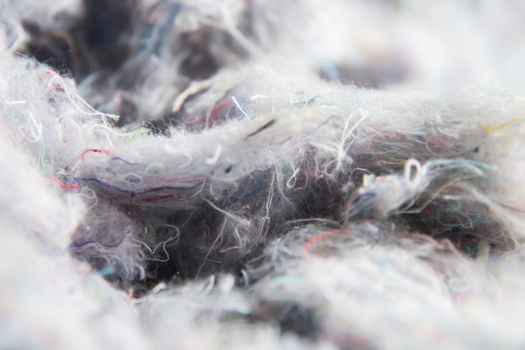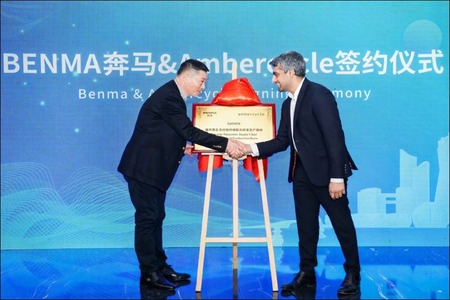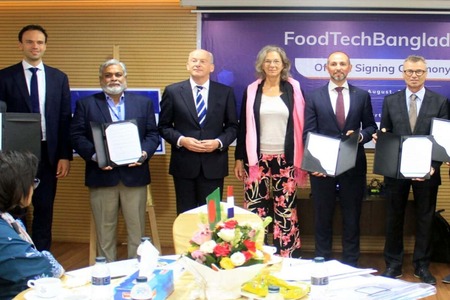
International microfibre shedding standard completes second phase
YarnsandFibers News Bureau 2021-09-09 13:30:52 – BelgiumA sector alliance that was formed to address challenges related to microplastics has completed the next phase of its project to produce a harmonized industry standard for the supply chain. The results of a fiber fragmentation testing conducted in anticipation of the establishment of a CEN Standard have been revealed by the Cross Industry Agreement (CIA) (from the European Committee for Standardization).
The standard will become an ISO standard under the Vienna Agreement once it is verified, giving apparel producers and policymakers a valuable tool to help prevent microfibre shedding into the environment.
The Cross Industry Agreement was signed in 2018 by five industry organizations that promised to work together to proactively address the issue of microplastics. The International Association for Soaps, Detergents, and Maintenance Products (A.I.S.E. ), the European Man-Made Fibres Association (CIRFS), the European Outdoor Group (EOG), EURATEX, the European apparel, and textile industry confederation, and the Fed were the first signatories (FESI).
Together, the five organizations realized that the first step toward enabling global action on the issue was to agree on a harmonized test procedure that would allow for the collection and comparison of data generated globally to aid in the development of solutions.
The microfibre shedding test method was developed with the help of experts from 28 European, American, and Asian organizations, and the final product was handed over to CEN in 2020. Since then, CIA personnel have been working with CEN to fine-tune aspects in order to meet the CEN Standard's requirements. To ensure that the procedure is repeatable, the partners conducted a round-robin trial (RRT)[1] to see if it could be duplicated in multiple laboratories and yield similar findings. The RRT, which was coordinated by the CIA, entailed ten organizations sending fabric samples to all of the participating facilities and then collecting and analyzing the data.
The RRT results reveal statistically significant consistency both inside and between participating laboratories, demonstrating that the procedure is repeatable in the same setting as well as replicable in other labs.
The CIA has submitted the RRT results to CEN, with the goal of confirming the CEN Standard in the near future. After that, it will be pushed throughout the apparel industry and will serve as a significant tool for researchers, businesses, and governments as they work to reduce microfibre shedding in garment manufacturing.
Jan Robinson, scientific and regulatory affairs director at A.I.S.E., said that A.I.S.E. is glad to see the harmonized technique developed under the Cross Industry Agreement evolving towards a European standard. This will serve as a solid and well-recognized foundation for a wide range of studies aimed at characterizing microplastic releases from textiles and testing potential solutions from all industry partners.
Frédéric Van Houte, director-general of CIRFS, said that the standardized test procedure will be a huge step forward. It will not only aid in the accurate assessment of microplastics shedding from textiles, but it will also enable the industry to investigate ways to reduce it.
Dr. Katy Stevens, head of CSR and sustainability at the EOG, said that a standardized test method has for a long time been the missing puzzle piece that has impeded major development in this area. They’re excited that the standard will be released soon, allowing the industry to advance in both understandings and reducing microfibre shedding from textiles.
Mauro Scalia, director of sustainable businesses at EURATEX, said that with the Cross Industry Agreement, industry and researchers have now accomplished a lot to shed light on microplastic release from textiles. EURATEX is looking forward to the next phase: finding realistic and enforceable solutions to deal with such a global issue and use sustainable textiles in the EU.”
FESI Secretary General Jérome Pero, said that their members have been impatiently waiting for a standardized test method for microplastics shedding from textiles that will shed light on microplastics emissions. Thanks to the Cross Industry Agreement's and the scientific community's efficient and collaborative efforts, this will soon become a reality, allowing businesses and policymakers to make informed decisions on microplastics emissions.
Market Intelligence
Ask for free sample Report

experience
Customer Base
dedicated team
Countries Served Worldwide









